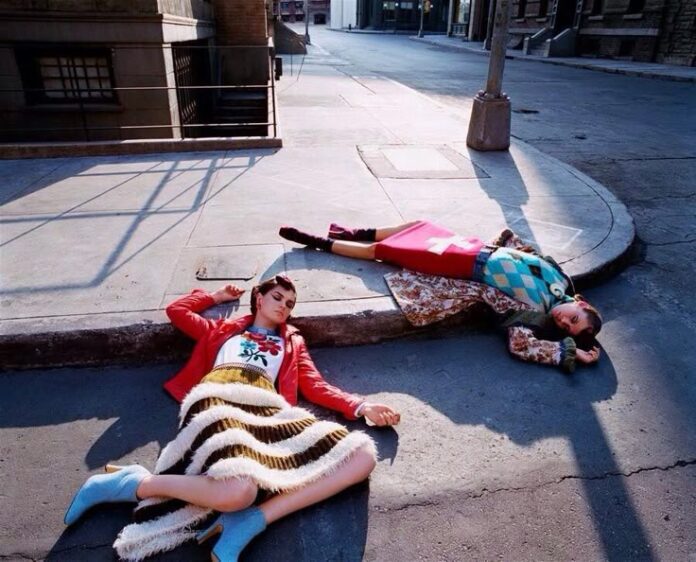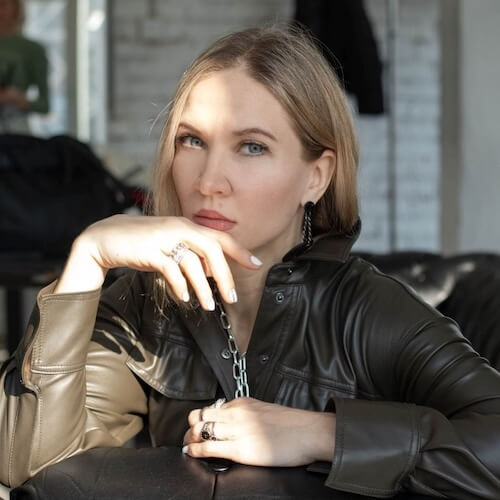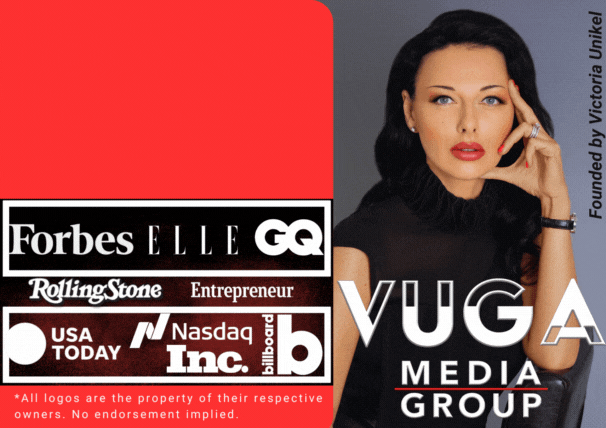Have you noticed the shift towards a more democratic fashion trend? Both extremes—from wide to narrow, long to short, lavish luxury to minimalist simplicity—find their place in style. While certain items may occasionally dominate, there’s no longer a single dictatorial line that everyone must adhere to.
A decade or two ago, fashion was more prescriptive, setting trends that were considered mandatory for those aspiring to be stylish and modern. Back then, micro-trends emerged bi-annually, and eventually even more frequently. Over the past 20 years, consumer shopping habits have undergone a significant transformation. Today, I’ll explore how fashion preferences have evolved over the last few decades, where we stand today, and why trends seem to have lost their former influence.
Fashion of the 2000s-2010s
The style of the early 2000s continues to inspire designers, thanks to its distinctive character and vibrant energy. The era was marked by a “sexy” aesthetic often referred to as “porno-chic,” characterized by low-rise jeans, leggings, and body-hugging outfits. Ultra-low waistlines that revealed underwear were in vogue, with iconic thongs being particularly popular. Key elements included mini skirts, tie-up tops, and denim adorned with decorative details, heavily influenced by pop culture hits like «Gossip Girl», «Sex and the City», and «Friends».
The 2000s were also defined by logos and branding, with Juicy Couture’s velour tracksuits, Louis Vuitton’s monograms, and oversized logos serving as status symbols.
Mid-decade brought a boom in bohemian chic, or “boho,” featuring floral-print dresses, wide belts, and headbands. Brands like Free People and Urban Outfitters became synonymous with this trend.
Athleisure gained traction thanks to brands such as Adidas and Nike, transforming gym wear into everyday attire—Nike Air Force 1s and Adidas Superstars were ubiquitous.
Accessories of the time were bold: shoulder bags, oversized sunglasses, and statement jewelry, particularly personalized nameplate necklaces inspired by celebrities like Jennifer Lopez and Carrie Bradshaw from «Sex and the City».
The era also introduced a blend of glamour with sportswear, pairing sneakers with dresses or fur with jeans—a trend now known as “ironic glamour.”
However, the 2000s also saw the rise of fast fashion, with mass-market brands like Zara and H&M rapidly copying luxury designs. This accelerated the pace of trends, with changes every six months and a two-week turnover in stores.
The style of the early 2000s was straightforward and easy to comprehend. There were clear “rules” for staying relevant, and fashion-conscious individuals knew exactly what to wear to keep up. Additionally, seasonal trends shifted dramatically every half-year. To stay current, one simply needed to grasp the general direction of fashion and add in rapidly evolving micro-trends.
Fashion of the 2010s-2020s
Fashion in the 2010s was very dynamic, reflecting changes in culture, technology, and social values.
Among global trends were the influence of streetwear and social media, with brands like Supreme, Off-White, and Yeezy gaining popularity. The trend for style inspired by street fashion—hoodies, sneakers, baseball caps, and oversized clothing—was in vogue.
A second major direction in the 2010s was a trend towards simplification.
In the mid-2010s, there emerged a trend for simple, everyday wear inspired by ordinary life: basic t-shirts, jeans, and sneakers. An increasing number of young consumers began to choose the simplest and most comfortable clothing for daily hangouts with friends, commuting to work, and parties.
Minimalism also became an important direction in fashion: clean lines, neutral colors (white, black, beige), and simple silhouettes gained popularity thanks to brands like Céline (under Phoebe Philo) and The Row.
The trend towards simple clothing led to a global direction in fashion such as unisex. Trendsetting brands like Gucci, Balenciaga, and Zara began releasing collections that blurred the lines between men’s and women’s fashion.
It is no surprise that an androgynous style became fashionable—clothing that emphasizes neutrality became popular, especially among young people.
The desire to wear comfortable clothing that doesn’t restrict movement led to a trend towards oversized styles. Oversized jackets, coats, and jeans harmoniously fit into the overall decade’s fabric—a desire for comfortable, unrestrictive clothing.
An emphasis on sexuality, body exposure, opulence, and wealth began to look distinctly outdated and unfashionable.
Key elements of 2010-2020 wardrobes include sneakers (from white Stan Smiths to chunky Balenciaga Triple S), denim (high-waisted jeans, denim jackets, and overalls), as well as oversized jackets as part of the trend towards oversized clothing.
This was the general “fashion” line, but it’s worth noting separately the influence of social media, which dictated fast-paced and vibrant fashion, quick consumption, and a multitude of constantly changing trends. Micro-trends, thanks to social media, changed much more actively.
It is no surprise that cult brands of the decade became Balenciaga with Demna Gvasalia, who knew how to work well with social media and set the trend for street style, while the brand Vetements also popularized oversize?
But fashion in 2010-2020 was also characterized by an increased pace at which trends change—due to the influence of social media. The fashionable youth, just like a decade ago, understands the general “fashion” line but is forced to react and adopt fashion trends more quickly, as they change much faster than before.
Fashion 2020-2025
The fashion from 2020 to 2025 is significantly different from the trends of previous decades, not least due to the pandemic, the development of artificial intelligence and neural networks.
Globally, specific items, lengths, and silhouettes are no longer in trend; instead, ideas such as a focus on sustainability and comfort, eco-friendliness, consumers began to pay attention to nature, the environment, and the pace of active fashion consumption decreased.
But these are all ideas. What about fashionable clothing over the last five years?
The 2000s (fashion started drawing inspiration from the early 2000s: low-rise jeans, bright colors, shiny fabrics, and accessories in Y2K style) and the 1990s (baggy jeans, graphic print t-shirts, and minimalism of the ’90s also returned to fashion), as well as the 1970s and 1980s (wide lapels, flared pants, and bright colors from these decades periodically appeared in collections) are all in trend. And there are also bold colors and prints, neon shades, and geometric and abstract patterns.
So what should one wear? If both wide and narrow, bright and monochrome, oversized and fitted, old-school, and flashy luxury are in fashion?
CONCLUSIONS
Over the last five years, that general line in fashion has disappeared, and “cores” – Barbiecore, Librariancore, Grandpacore, Mobwifecore, Cottagecore, Marmaidecore, and another million other “-cores” have come to replace trends. These “-cores,” unlike trends, flash by even faster—some “-cores” last a maximum of a couple of months, or even less.
In 2025, there is no general line (to look guaranteed fashionable), following the “-core” trends not only impossible due to their super-fast changeability (and sometimes several core-aesthetics are in trend at once), but also because it’s simply expensive (try buying a full Barbie wardrobe this month, then a grandfather’s next month, and mermaids after that). Not to mention the enormous amounts of waste (poor planet! Imagine people changing their entire wardrobes EVERY MONTH?)
So what should one do? There is no global trend, it’s impossible to keep up with fleeting trends…
It must be acknowledged that the period of chasing trends has ended, there’s nowhere left to hide behind them… Now one of the main fashion questions arises – WHO ARE YOU? AND WHAT SUITS YOU? WHAT CLOTHES REFLECT AND TRANSMIT YOU?
Personal style comes to the forefront, which suits you exactly, reflects and transmits exactly you, and which does not need to be changed every month, half a year or a year.
The benefits are obvious – your own style not only shows your individuality, saves from chasing trends, doesn’t require monthly investments, but finally allows you to take care of the planet, because a wardrobe in your style can be worn for many years.
Fashion 2025 is not just about clothing, but also a way of self-expression, caring for the planet and adapting to new realities.
Are you ready to give up the fashion race for trends and find YOUR style?




